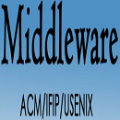Drought is a complex environmental phenomenon that affects millions of people and communities all over the globe and is too elusive to be accurately predicted. This is mostly due to the scalability and variability of the web of environmental parameters that directly/indirectly causes the onset of different categories of drought. Since the dawn of man, efforts have been made to uniquely understand the natural indicators that provide signs of likely environmental events. These indicators/signs in the form of indigenous knowledge system have been used for generations. The intricate complexity of drought has, however, always been a major stumbling block for accurate drought prediction and forecasting systems. Recently, scientists in the field of agriculture and environmental monitoring have been discussing the integration of indigenous knowledge and scientific knowledge for a more accurate environmental forecasting system in order to incorporate diverse environmental information for a reliable drought forecast. Hence, in this research, the core objective is the development of a semantics-based data integration middleware that encompasses and integrates heterogeneous data models of local indigenous knowledge and sensor data towards an accurate drought forecasting system for the study areas. The local indigenous knowledge on drought gathered from the domain experts is transformed into rules to be used for performing deductive inference in conjunction with sensors data for determining the onset of drought through an automated inference generation module of the middleware. The semantic middleware incorporates, inter alia, a distributed architecture that consists of a streaming data processing engine based on Apache Kafka for real-time stream processing; a rule-based reasoning module; an ontology module for semantic representation of the knowledge bases.
翻译:暂无翻译




